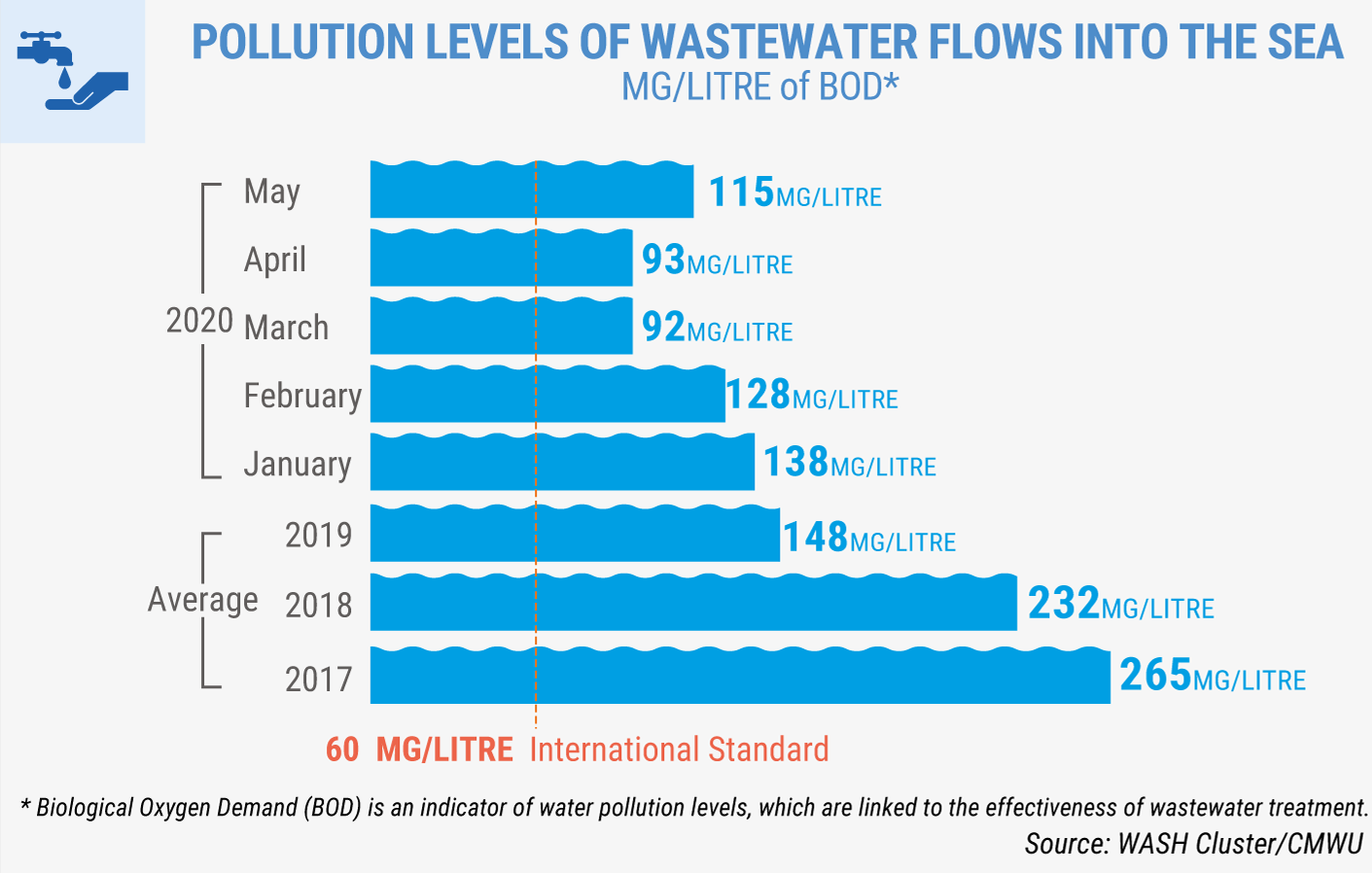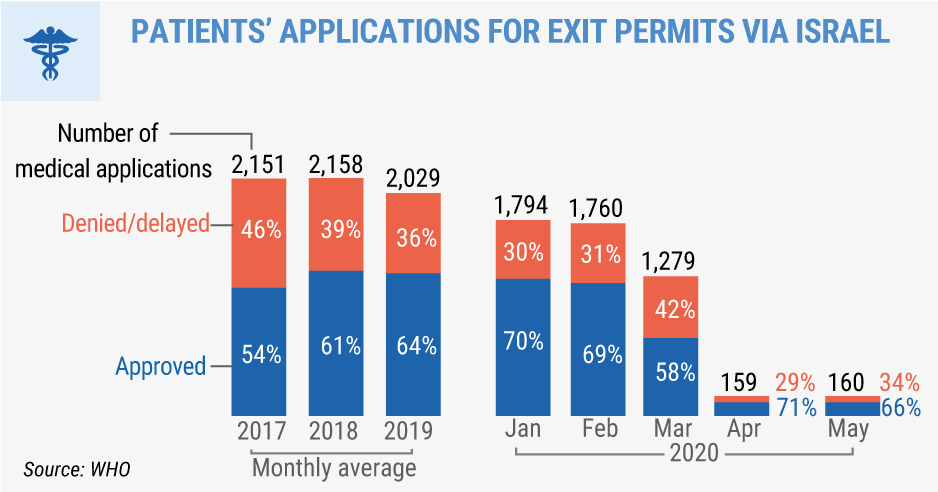Gaza Strip: Snapshot | May 2020
Monthly highlights
- As part of the measures to contain the pandemic, the de facto authorities announced the full closure of the two passenger crossings, from 23 May till the end of June; however, limited movement through the Erez crossing with Israel, continued in both directions.
- Exit of people through the Erez crossing has been also disrupted following the suspension of coordination between the Palestinian Authority (PA) and Israel while movement of goods through the Kerem Shalom crossing remained unchanged.
- A week-long heat wave triggered power cuts of 12 hours per day, up from nine hours during the rest of the month.
- The unemployment rate in the first quarter of 2020 stood at 46 per cent, the same as during the equivalent period in 2019; the figure only partially captures the impact of the COVID-19 measures, imposed since March.
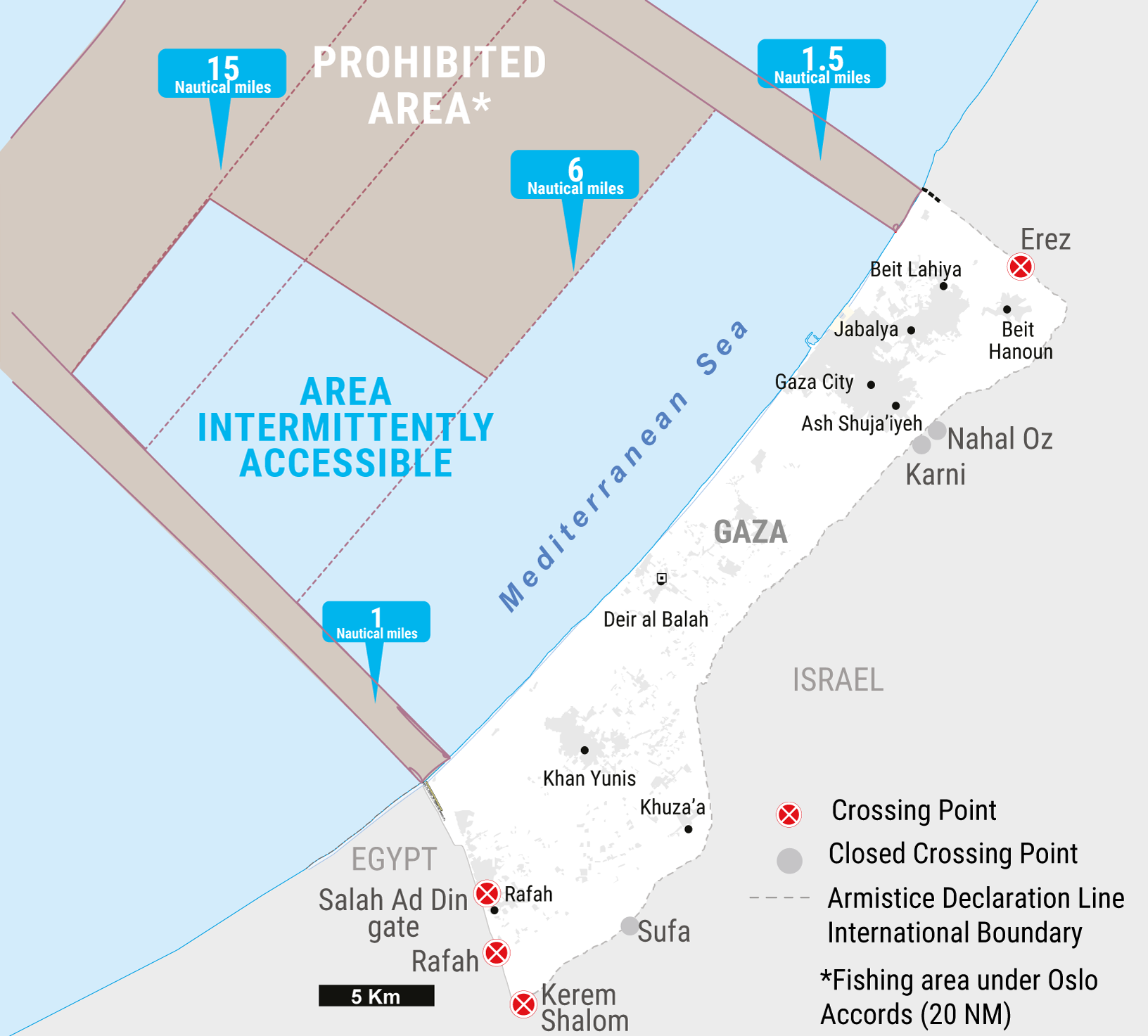
Protection of civilians and casualties
- One rocket was fired from Gaza towards Israel, after which Israeli forces shelled military sites in Gaza; no injuries were reported.
- On at least 88 occasions, Israeli forces opened fire near its perimeter fence around Gaza and off the coast, presumably to restrict Palestinian access to these areas; four fishermen were injured.
- On four occasions, Israeli bulldozers entered Gaza and carried out land levelling near the perimeter fence.
Comprehensive data on conflict-related casualties is available at OCHA’s interactive database.
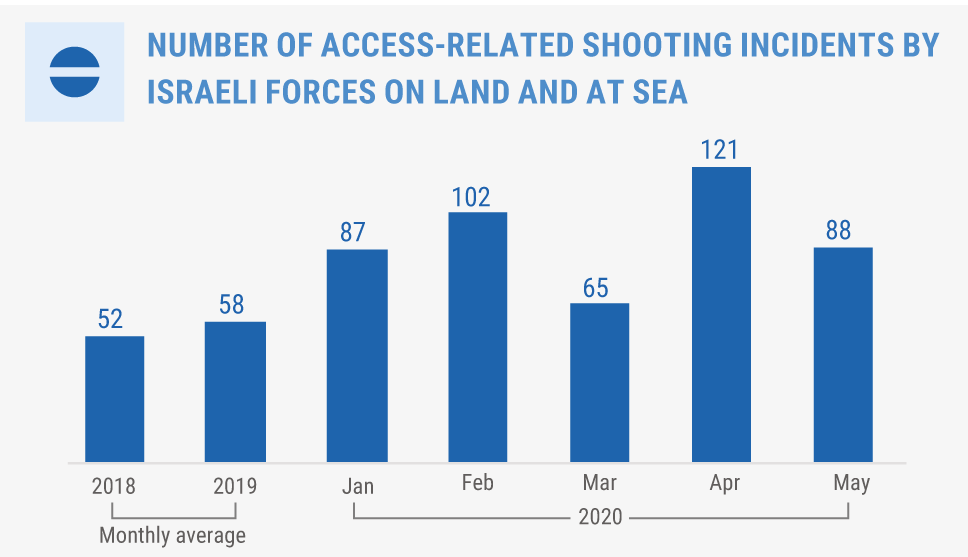
Access
- 233 exits of permit holders were recorded via the Erez crossing during May, nearly the same as in April; since the outbreak of COVID-19 and the ensuing restrictions on movement, only urgent cases have been allowed out via the crossing.
- About 550 people returned to Gaza via Erez, 45 per cent more than in April; all returning people have been sent to a mandatory quarantine for 21 days.
- In response to Israel intention to annex parts of the West Bank, the PA is no longer receiving applications for exit permits from Gaza, except for cases where this could save lives;[1] some patients’ applications have been forwarded to the Israeli authorities by human rights organizations.
- 1,168 people entered Gaza from Egypt during a three-day re-opening of the Rafah crossing between 12 and 14 May; no exits were recorded since 11 March.
- 7,667 truckloads of goods entered Gaza via the Kerem Shalom crossing with Israel, 12 per cent more than in April, and another 432 entered through the Rafah Crossing with Egypt, 20 per cent less than in April.
- Some 280 truckloads carrying mostly agricultural produce exited Gaza to the West Bank (77 per cent), Israel (13 per cent) and markets abroad (10 per cent), a slight increase compared with April.
Comprehensive data on Gaza crossings is available at OCHA’s interactive database.
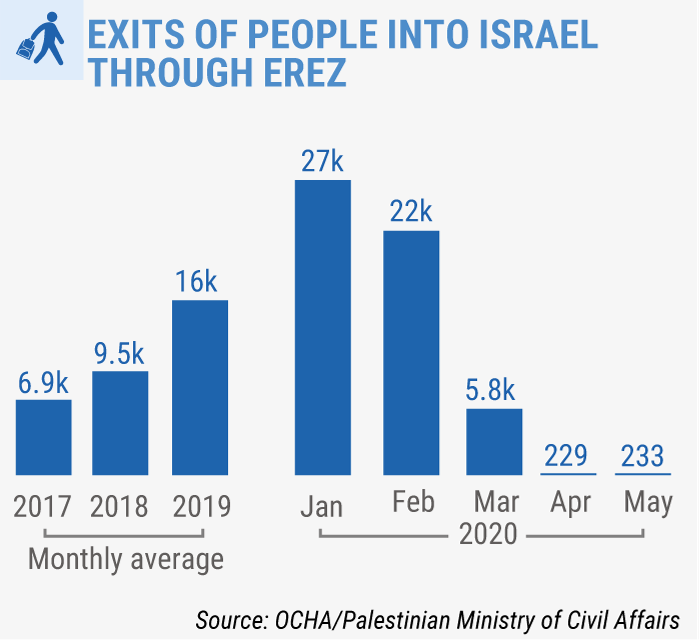
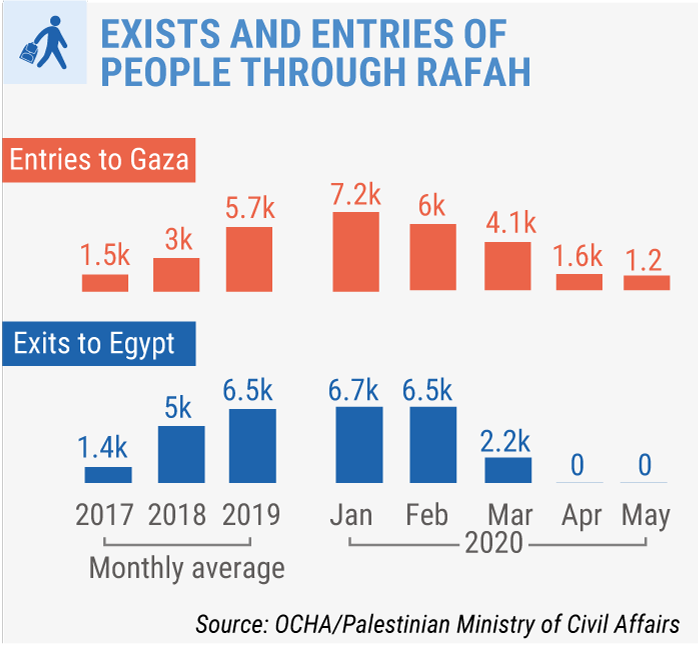
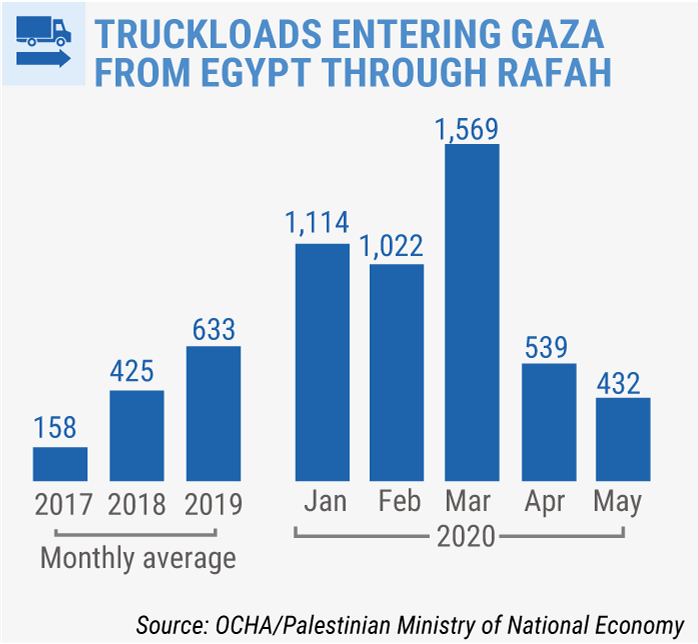
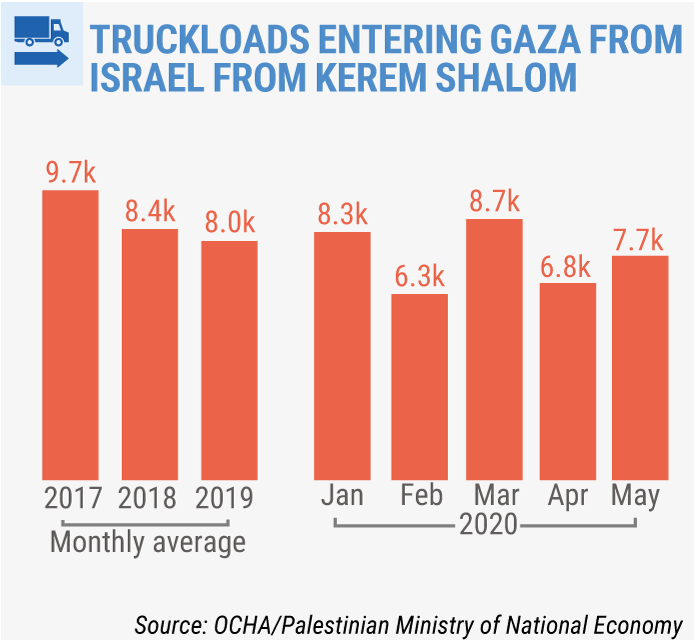
Services, Livelihoods and Shelter
- 160 exit permit applications by patients referred to hospitals in the West Bank, mostly in East Jerusalem, were submitted in May, of which two-thirds were approved; the number of applications represents only 10 per cent of the monthly average submitted in the first quarter of 2020.
- The percentage of essential drugs at zero stock (less than a month supply) stood at 43 per cent, the same as during April 2020.
- The pollution level of the wastewater discharged into the sea increased by 24 per cent compared with April, due to repair works underway at Gaza city’s sewage treatment facility. Seawater samples taken this month showed that about 77 per cent of the total seashore are highly polluted.
- To ensure availability of adequate power supply at the European Gaza hospital, which is designated for the treatment of people with COVID-19, the ICRC increased the capacity of the facility’s backup generator and optimized its fuel consumption.
An interactive database on electricity supply in Gaza is available at OCHA’s website.
